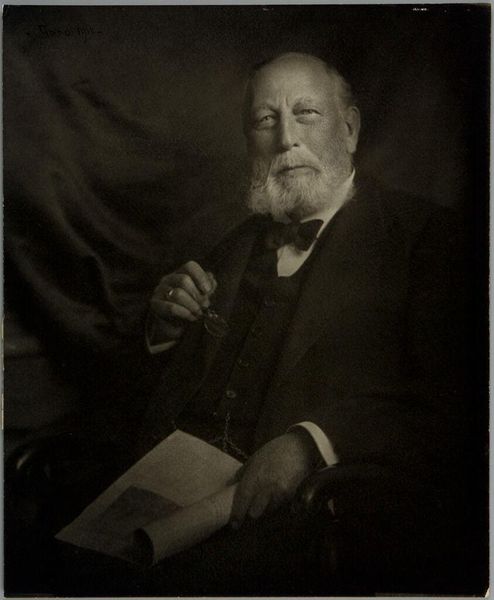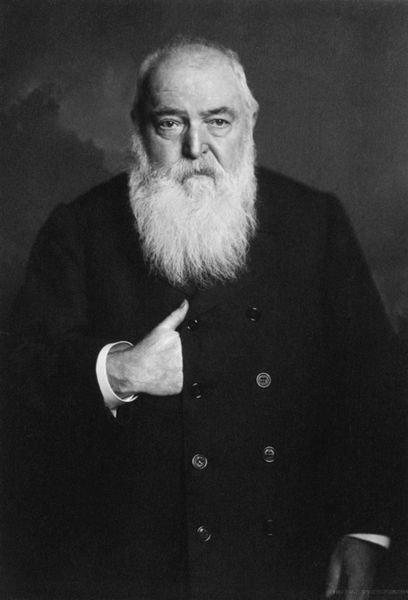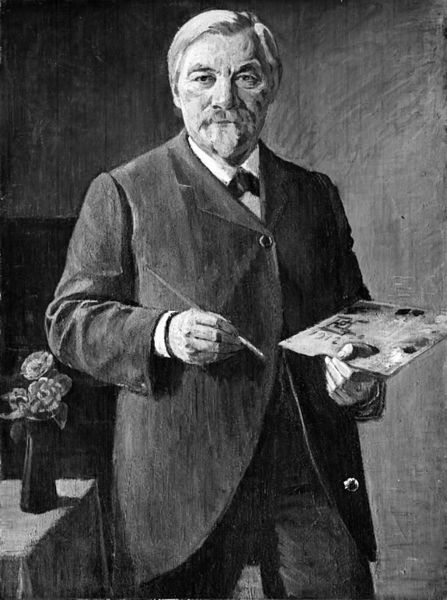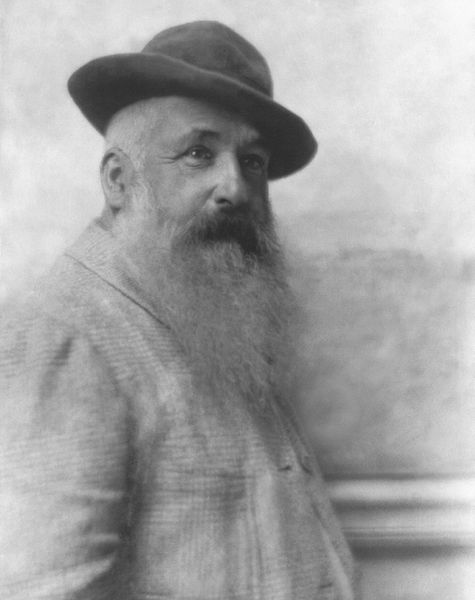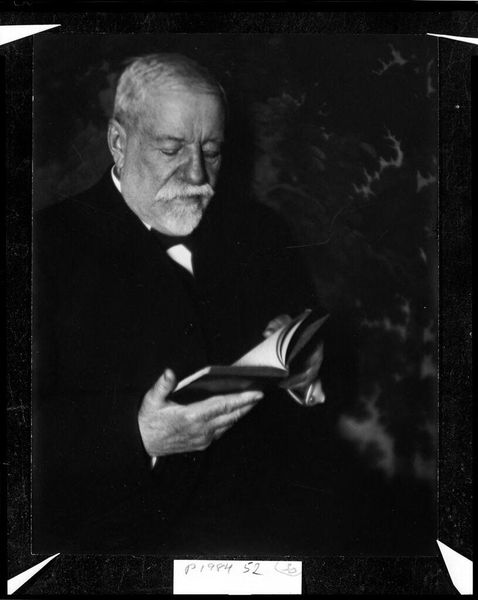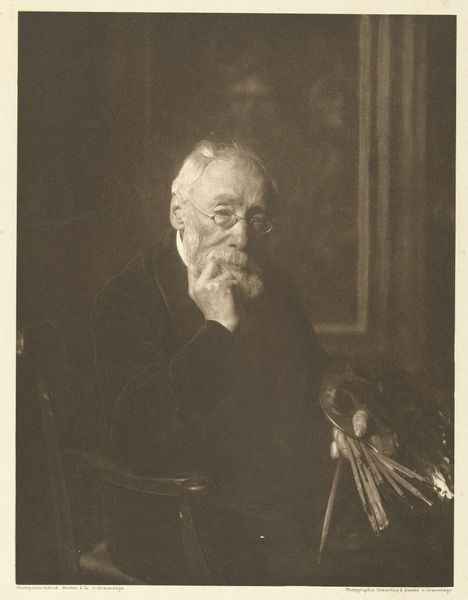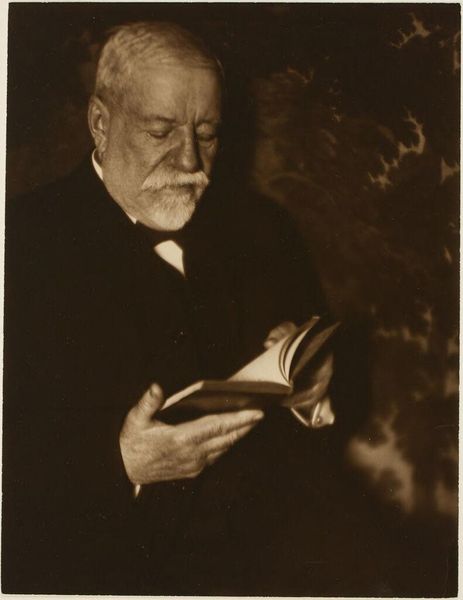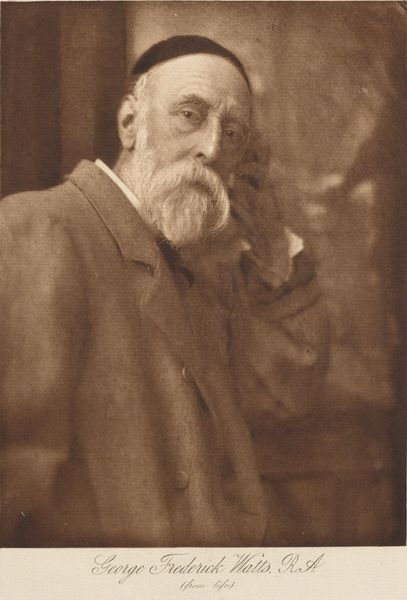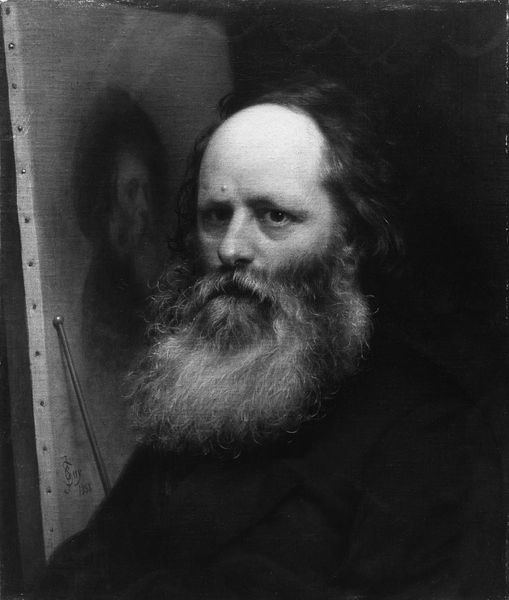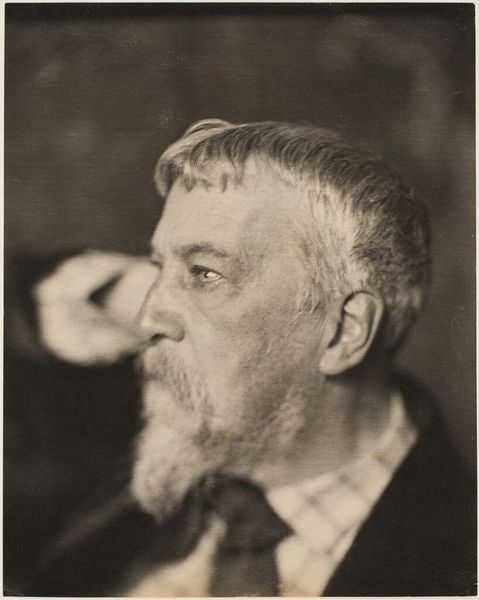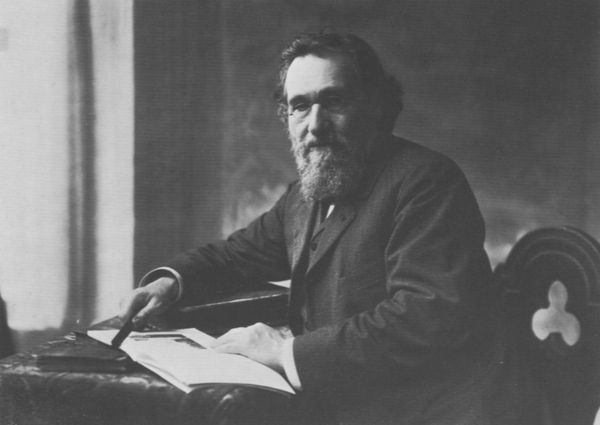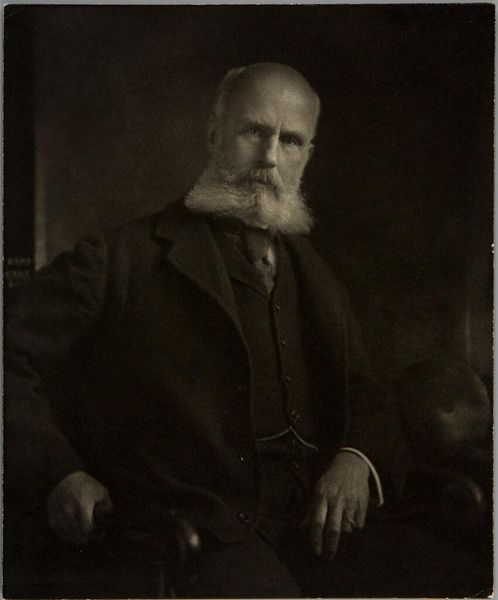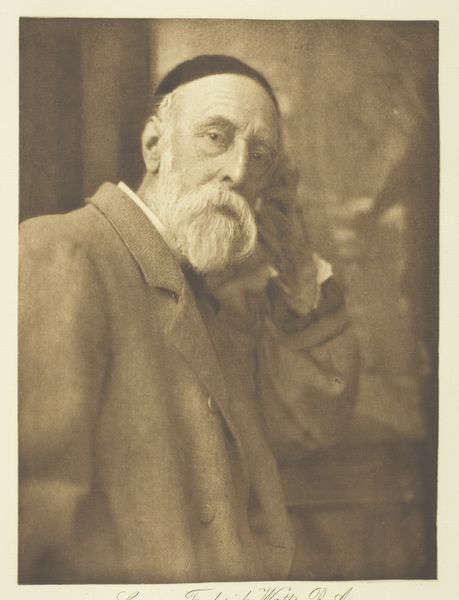
photography
#
portrait
#
black and white photography
#
portrait
#
photography
#
black and white
#
monochrome photography
#
history-painting
#
academic-art
#
realism
#
monochrome
Copyright: Public domain
Curator: This is a portrait of Ernst Haeckel, the German biologist and naturalist, captured in 1906 by Nicola Perscheid. It's a compelling photograph. Editor: Yes, there's a certain… gravitas to it. A solemnity that emanates from the textures of the wool suit and the stark contrast in tones. He literally has death in his hand. Curator: Haeckel was a staunch proponent of Darwin's theory, advocating for evolutionary ideas that were groundbreaking and, for some, controversial. This photograph exists as a piece of history, capturing a very specific perspective. It has that sort of quiet assuredness that academics of that era seemed to project. The picture shows him in command of nature’s raw material and almost makes an argument for his point of view. Editor: Look at the way Perscheid employs monochrome photography here. We see the texture of the man's jacket, the stark bone of the skulls he presents – one primate, one hominid. It's so much about touch, the direct engagement with the materiality of science. How it can sometimes look morbid from the outside. Curator: Precisely. And in Haeckel's day, his theories were challenging prevailing social and religious views. To me, the ape skeleton in the background signifies both the basis for Haeckel's life's work but also the "scandalous" context of evolution as it began to influence societal structures. We cannot disassociate those origins from current views on racism, colonization, and the social darwinist point of view as related to certain elements in evolutionary thinking. Editor: Indeed. Considering this portrait’s moment, it's a potent visual statement on science and humanity's place in the natural world, utilizing readily available materials. These artifacts – skulls, skeletons - are arranged within reach and easily accessible for intense investigation. Haeckel, as captured by Perscheid, emerges as the material scientist par excellence. Curator: Seeing Haeckel in this light invites consideration of how our understandings of the human and non-human condition have transformed or stayed static. It also points to who gets to dictate the meaning, and to whom this access to "truth" belongs. Editor: Absolutely. It reminds us of how closely our scientific inquiries are tied to the tools, objects, and yes, even bones, right in front of us. The photograph is as much about Haeckel as it is about those material conditions. Curator: Yes. It shows both how far we have come and the dangers of viewing science as divorced from sociopolitical realities. Editor: It underscores the beauty and responsibility inherent in engaging with matter, whether that’s art or scientific inquiry.
Comments
No comments
Be the first to comment and join the conversation on the ultimate creative platform.
